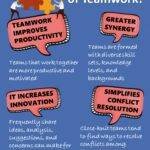
The “Hello i am” Game
Hello I Am is a fun and effective group exercise to show that assigning an attitude or telling someone they are “acting grumpy” can actually affect how they view themselves and how they act during the day. This activity is fascinating because it allows us to understand how the gaze of others, on many occasions, shapes us and we end up adopting the role assigned to us.
Create a list of adjectives that describe people’s attitudes (you can search for a list on the internet). For example: grumpy, happy, negative, fearful, encourager, discourager, positive, joker, etc.
Have enough adjectives for every member of your team, and write each adjective on a self-adhesive “Hello I Am” sticker. Place the name stickers in a container, and have each team member draw a name sticker out without being able to see the adjective.
Have them stick the name tag on their shirt and wear it for a specific period of time, instructing them that all of their responses and interaction for that time must reflect the adjective on their name tag.
You can use this in several ways.
- Your team could wear them during a typical meeting or brainstorming session to show how good and bad attitudes affect outcomes.
- They could wear them for a typical work day and then discuss how they felt.
- Or, you could have them wear a name tag half of the day, and switch with someone for the second half. If they switch name tags, they will see how behavior and action often defines feeling, and not the other way around.
Moment of Reflection
After the activity you decide to do, invite people to reflect on what happens when we are labeled a certain way.
- If a person is told all the time that they are very negative, how does that person usually behave in all areas?
- How much truth can there be in the fact that he is a negative person?
- Is the person always negative or does he or she have negative thoughts on any particular occasion?
- If we label a person in a way, does he always end up acting that way? Why?
The topics of this publication: reflection, integration, interactions, self, critical thinking


